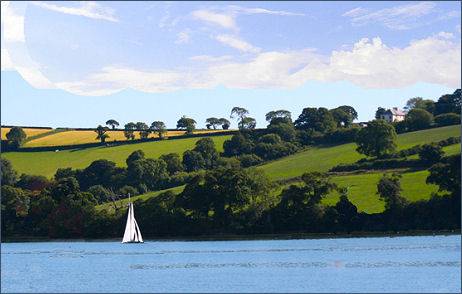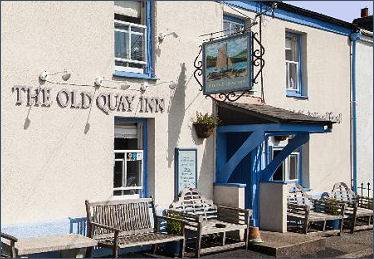Devoran
OS Grid ref:- SW 793 392
 Devoran lies four miles south of the town of Truro on the northeast bank of the Carnon River at its confluence with Restronguet Creek, a tidal creek which flows into Carrick Roads above Falmouth and forms part of the parish of Feock. The village derives its name from the Cornish word for water, 'Dowr'.
Devoran lies four miles south of the town of Truro on the northeast bank of the Carnon River at its confluence with Restronguet Creek, a tidal creek which flows into Carrick Roads above Falmouth and forms part of the parish of Feock. The village derives its name from the Cornish word for water, 'Dowr'.
The now peaceful village played an important role in the tin and copper mining industry. It developed in the late eighteenth century as a small port and hamlet engaged in the export of mined minerals and the import of mining materials and coal. By the 1840s wharves had been built all along the creek from Devoran to Point, together with boatyards, repair shops and housing for the workers.
The Victorian village church of St John and St. Petroc was built in in the early English style, with a square tower in 1855-56 the architect was John Loughborough Pearson, who was also the architect for Truro cathedral. The building overlooks Restronguet Creek and consists of a nave and chancel only. Thomas Lobb, a distinguished Victorian botanist and plant hunter is buried in the churchyard.
 The Old Quay Inn, a long established pub, is situated at the head of Restronguet Creek in Devoran, adjacent to the coast-to-coast cycle and walking trail. The pub has a terraced garden at the back and serves serve fresh, good food, and wine and real ale.
The Old Quay Inn, a long established pub, is situated at the head of Restronguet Creek in Devoran, adjacent to the coast-to-coast cycle and walking trail. The pub has a terraced garden at the back and serves serve fresh, good food, and wine and real ale.
Nearby lies the Trelissick estate, including the stunning Trelissick Garden, which has been owned by the National Trust since 1955 when it was donated by Ida Copeland following the death of her son Geoffrey, a stained glass memorial, bearing the Copeland Crest, is displayed in the village church. The gardens feature Hydrangeas, Rhododendrons, Camellias and 500 acres of parkland and riverside woods overlooking the River Fal and Carrick Roads.
The garden is noted for its year round colour and superb views of the highly attractive Fal estuary, one of the most beautiful estuaries in the country and Falmouth harbour. The house, which dates to the eighteenth century is owned and lived in by the Copeland family and is not open to the general public.